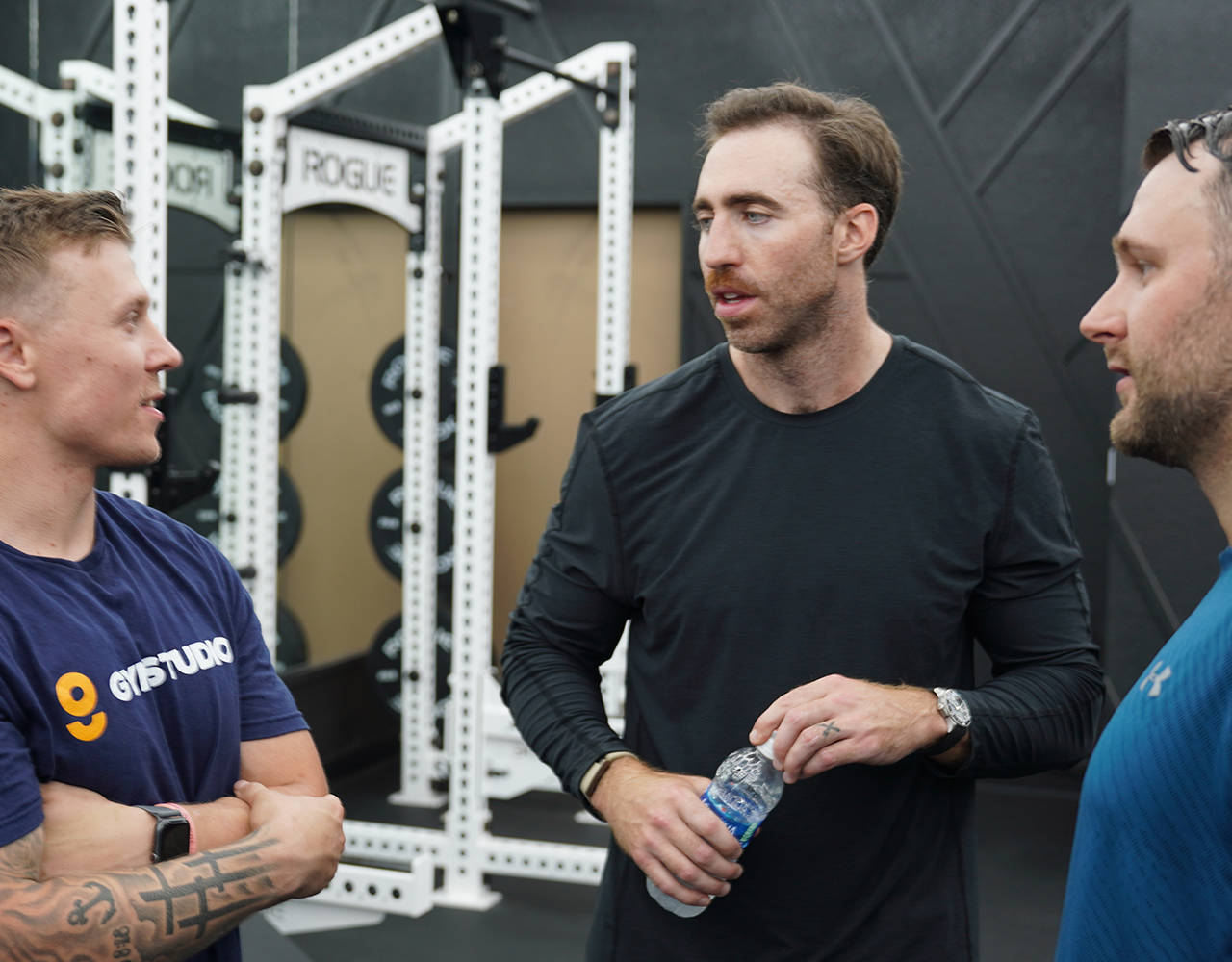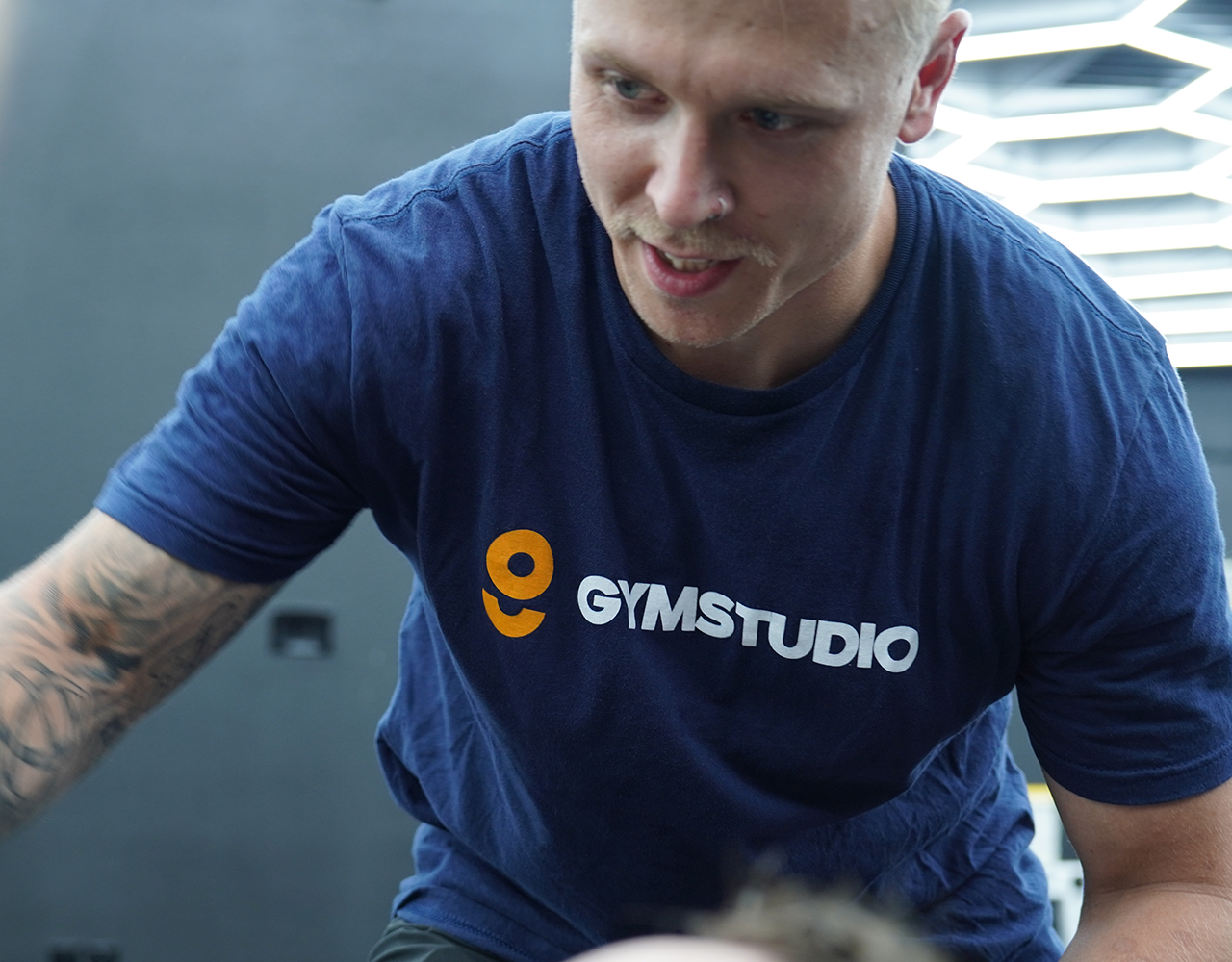Safely Returning From The COVID-19 Brink
A Review of Guidelines and Recommendations
America is slowly reopening for business. Schools are trying to navigate the next part of safely returning our students and athletes to normalcy by trying to establish how summer programs including summer strength and conditioning programs and summer sports camps/practices will operate.
There is a certain murkiness to how we all should return to training our athletes and multiple organizations have created multiple documents with guidelines on how to do so. For me, it has been information overload so a certain analysis should be done to find commonalities and differences in those guidelines so your school administration and coaching staff can make an informed decision on when to return to activities and how to do so safely.
One thing is for certain: WE CAN NOT SCREW THIS UP. TAKING CAUTION IS BEING PRAGMATIC. CAUTION IS NOT WEAKNESS IN THIS REGARD. One case of COVID-19 with an athlete or coach could create an even bigger disruption in training and threaten our sports seasons this next year if we bungle this.
In this review, I will be comparing and contrasting the following guidelines and recommendations:
- The National Federation of High School’s (NFHS) Guidance for Opening Up High School Athletics and Activities: https://www.nfhs.org/media/3812287/2020-nfhs-guidance-for-opening-up-high-school-athletics-and-activities-nfhs-smac-may-15_2020-final.pdf
- The National Strength and Conditioning Association’s (NSCA) COVID-19 Return to Training: https://www.nsca.com/contentassets/61c0fb0a476149848de009f1630fa457/nsca-covid-19-rtt.pdf
- Centers for Disease Control and Prevention’s (CDC) Activities and Initiatives Supporting the COVID-19 Response and the President’s Plan for Opening America Up Again: https://www.cdc.gov/coronavirus/2019-ncov/downloads/php/CDC-Activities-Initiatives-for-COVID-19-Response.pdf#page=45 (starting on page 45)
There is a lot to dig through with each one of these documents as they are extremely comprehensive. I’ll try to wade through the murky water, but the main crux of this article is to give you topics and list the recommendation from each document to help you compare and contrast.
TOPIC ONE: When Should We Reopen and Who Makes That Call?
NFHS Recommendation: The NFHS doesn’t specifically touch on re-opening your school, but does reference the CDC Guidelines and the President’s Re-Opening of America Plan which mirror each other.
“Since NFHS member state associations are a well-respected voice for health and safety issues, the NFHS SMAC strongly urges that these organizations engage with state and local health departments to develop policy regarding coordinated approaches for return to activity for high school, club and youth sports.”
NSCA Recommendation: This is as close as the NSCA comes to speaking on the topic in my review.
“Adhere to social gathering and distancing policies at your institution, according to local, state, and federal authorities.”
CDC Recommendation: The CDC has created a useful decision making tool that helps decision makers in your district decide when to re-open your school for any activities. It can be found here: https://www.cdc.gov/coronavirus/2019-ncov/community/schools-childcare/Schools-Decision-Tree.pdf
COMMON THREAD:
Every school should be in touch and work in conjunction with their local, state, and federal authorities to create a reopening plan and set forth a date and plan to re-open. Ultimately, the final decision rests with each school administration after getting approval from local, state, and federal authorities.
TOPIC #2: MANAGING SCHEDULES AND TRAINING ONCE YOU REOPEN
NFHS Recommendation: The NFHS does not specifically discuss any timing recommendations in their guidance, but does discuss grouping which I would equate to scheduling. Here is a common phrase from their Phases 1 and 2 to Return to Activity:
“Workouts should be conducted in “pods” of students with the same 5-10 students always working out together. Smaller pods can be utilized for weight training. This ensures more limited exposure if someone develops an infection.”
NSCA Recommendation: The NSCA really takes the lead on this providing the following checklist for managing schedules and training.
MINIMIZING RISK: MANAGING SCHEDULES & TEAM TRAINING SESSIONS
- Adhere to social gathering and distancing policies at your institution, according to local, state, and federal authorities
- Group size counts should include both athletes, staff, and account for transition periods between sessions
- Schedule mid- and post-workout cleaning periods, allowing a 10 – 15 minute buffer between teams or groups
- Limit or stagger training groups throughout workout blocks and/or alternate training days
- Favor efficient training methods, limiting workouts to 2 – 3 non-consecutive days per week
- Avoid person-to-person contact while spotting with use of bar catches and the two-spotter technique
- For programming purposes, consider grouping athletes based on conditioning status
- Create exercise pairings to limit weight room traffic; Or one way traffic flow based on entrances and exits
- Maximize fresh air flow in the weight room, and a relative humidity ≤60%
- Use outdoor training spaces whenever possible
- Keep doors propped open and lights on throughout the day
CDC Recommendation: While the CDC is focused primarily on the school classroom environment and not specifically training athletes, their guidelines do have some guidance in this area:
- Ensure that student and staff groupings are as static as possible by having the same group of children stay with the same staff (all day for young children, and as much as possible for older children).
- Restrict mixing between groups.
- Limit gatherings, events, and extracurricular activities to those that can maintain social distancing, support proper hand hygiene, and restrict attendance of those from higher transmission areas (Step 2; Note: restricting attendance from those in Step 1 areas).
- Restrict nonessential visitors, volunteers, and activities involving other groups at the same time.
- Space seating/desks to at least six feet apart.
- Close communal use spaces such as dining halls and playgrounds if possible; otherwise stagger use and disinfect in between use.
- Stagger arrival and drop-off times or locations, or put in place other protocols to limit close contact with parents or caregivers as much as possible.
COMMON THREAD:
Common themes in each set of guidelines is to limit interactions as to control a potential spread if someone was infected. Staggering schedules, drop-offs, and groupings is mentioned in the CDC and NSCA guidelines which speaks to limiting how many people come in contact with each other at your sessions. Another common theme is small groupings and consistent staffing. Again, this recommendation is so that a possible infection could be contained quickly and efficiently. In reading each guideline, groups of 10-15 seem to be the sweet spot of how large your group should be.
TOPIC #3: FACILITY & EQUIPMENT: CLEANING & SANITATION PROCEDURES
This is probably the most comprehensive and standard addition to each of these guidelines.
NFHS Recommendation: The NFHS provides a bulleted list in their guidance for Facility Cleaning and Equipment Considerations:
FACILITY CLEANING
- Adequate cleaning schedules should be created and implemented for all athletic facilities to mitigate any communicable diseases.
- Prior to an individual or groups of individuals entering a facility, hard surfaces within that facility should be wiped down and sanitized (chairs, furniture in meeting rooms, locker rooms, weight room equipment, bathrooms, athletic training room tables, etc.).
- Individuals should wash their hands for a minimum of 20 seconds with warm water and soap before touching any surfaces or participating in workouts.
- Hand sanitizer should be plentiful and available to individuals as they transfer from place to place.
- Weight equipment should be wiped down thoroughly before and after an individual’s use of equipment.
- Appropriate clothing/shoes should be worn at all times in the weight room to minimize sweat from transmitting onto equipment/surfaces.
- Any equipment such as weight benches, athletic pads, etc. having holes with exposed foam should be covered.
- Students must be encouraged to shower and wash their workout clothing immediately upon returning to home.
PHYSICAL ACTIVITY AND ATHLETIC EQUIPMENT
- There should be no shared athletic towels, clothing or shoes between students.
- Students should wear their own appropriate workout clothing (do not share clothing), and individual clothing/towels should be washed and cleaned after every workout.
- All athletic equipment, including balls, should be cleaned intermittently during practices and contests.
- Hand sanitizer should be plentiful at all contests and practices.
- Athletic equipment such as bats, batting helmets and catchers gear should be cleaned between each use.
NSCA Recommendation: Again the NSCA has a comprehensive checklist for cleaning facilities and equipment:
FACILITY & EQUIPMENT: CLEANING & SANITATION PROCEDURES
- Clean all weight room surfaces with germicidal disinfectant
- Consider providing masks and/or gloves
- Educate on weight room upkeep expectations during onboarding meetings with new athletes
- Provide COVID-19 related updates to weight room rules for athletes already in the program
- Promote hand washing before and after workouts, and provide hand sanitizer
- Keep extra bottles of disinfectant for athletes to wipe down equipment after use
- Avoid the sharing of cloth towels or rags; Provide one for each athlete and staff member
- Remove and store extra loose equipment from the training floor to minimize cleaning surfaces
- Carry a personal water bottle instead of drinking directly from the community water fountain
- Delegate staff cleaning duties, especially towards commonly shared pieces of equipment, including: Medicine balls, dumbbells, kettlebells, weight belts, bars and plates
- Ensure that cleaning and sanitation procedures are extended to restrooms, locker rooms, carpet and flooring, exercise mats, water fountains, and athlete nutrition “Fueling” stations
- Also refer to the NSCA’s Safety Checklist for Exercise Facility and Equipment Maintenance (NOTE: NSCA has a pretty comprehensive standard list for facility cleaning and upkeep already that I encourage you to review.)
CDC Recommendation: The CDC has put out some very specific documents on cleaning and sanitizing that they have hyperlinked in their master document. They highlight the following guidelines for schools.
INTENSIFY CLEANING, DISINFECTION, AND VENTILATION (STEPS 1-3)
- Clean and disinfect frequently touched surfaces within the school and on school buses at least daily (for example, playground equipment, door handles, sink handles, drinking fountains) as well as shared objects (for example, toys, games, art supplies) between uses.
- To clean and disinfect school buses, see guidance for bus transit operators.
- Ensure safe and correct application of disinfectants and keep products away from children.
- Ensure ventilation systems operate properly and increase circulation of outdoor air as much as possible such as by opening windows and doors. Do not open windows and doors if they pose a safety or health risk (e.g., allowing pollens in or exacerbating asthma symptoms) risk to children using the facility.
- Take steps to ensure that all water systems and features (for example, drinking fountains, decorative fountains) are safe to use after a prolonged facility shutdown to minimize the risk of Legionnaires’ disease and other diseases associated with water.
COMMON THREAD:
I think the subtitle phrase from the CDC’s guidelines say it best: INTENSIFY CLEANING, DISINFECTION, AND VENTILATION. That truly is what each one of these sets of recommendations are saying. Clean everything and clean it often. Keep your facilities ventilated as well so you don’t cause more issues due to airborne illnesses, allergens, and chemicals.
TOPIC #4: Testing/Screening For COVID-19 Before Workouts
NFHS Recommendation: NFHS recommends a screening of symptoms before workouts of symptoms, attendance record keeping, and the limitation of vulnerable individuals’ participation.
PRE-WORKOUT/CONTEST SCREENING
- Any person who has had a fever or cold symptoms in the previous 24 hours should not be allowed to take part in workouts and should contact his or her primary care provider or other appropriate healthcare professional.
- A record should be kept of all individuals present.
- Vulnerable individuals are asked to not attend or interact workouts in Phases 1-2 but can resume public interactions, but should practice physical distancing, minimizing exposure to social settings where distancing may not be practical, unless precautionary measures are observed in Phase 3
NSCA Recommendation: While extremely comprehensive in all other regards, the NSCA document does not specifically discuss any pre-screening or testing for COVID-19 before workouts or resuming training. The closest they come to any recommendation is to state:
“Communicate regularly with the medical and coaching staffs about at-risk athletes, including those with cardiac abnormalities, sickle cell trait, history of exertional or nonexertional collapse, asthma, and diabetes....Consider the use of pre-screening, readiness surveys and/or workload monitoring for tracking athlete status”
CDC Recommendation: The CDC, as it should, probably has the most specific guidance in this regard, but again reference more comprehensive documents and give the highlights here:
CHECK FOR SIGNS AND SYMPTOMS (STEPS 1-3)
- If feasible, conduct daily health checks (e.g. temperature screening and/or symptoms checking) of staff and students safely, respectfully, as well as in accordance with any applicable privacy laws or regulations. Confidentiality should be maintained.
- School and camp administrators may use examples of screening methods in CDC’s supplemental Guidance for Child Care Programs that Remain Open as a guide for screening children and CDC’s General Business FAQs for screening staff.
- Encourage staff to stay home if they are sick and encourage parents to keep sick children home.
COMMON THREAD:
I would say that symptom screening appears a bare minimum in each of the recommendations and honestly, that is what I would say is common sense. Documenting your attendance and symptom screening is also common sense in this regard. The taking of your students and athletes temperature is a hot button issue that is still murky with these guidelines. I think the CDC’s recommendation is the best to follow here.
TOPIC #5: Returning to Activity Safely in Regards to Conditioning and Acclimatization
NFHS Recommendation: Here is the NFHS’s stance:
“Return to Physical Activity: Current pre-season conditioning and acclimatization models assume that athletes have deconditioned over the summer months. The current pandemic may result in students being deconditioned for four to five months. The NFHS is currently involved with a number of other organizations in developing consensus guidelines for fall sports practices. These guidelines will be sent to state associations immediately after they are finalized and approved by all involved organizations.”
This is not expansive, but in my research I found that the NFHS utilized this document to guide it’s recommendations: “Return to Training Considerations Post-COVID-19.” United States Olympic & Paralympic Committee - Sports Medicine, Version 0.12. https://www.teamusa.org/coronavirus I made a conscious decision not to include this document in this review as I think three sets of recommendations muddied the water enough.
NSCA Recommendation: While not addressing pre-screening, the NSCA does provide a lot of information in regard to the return to activity. Here is their text in that regard:
“After periods of inactivity athletes are especially vulnerable to exertional injuries (4,5). Due to the shelter-in-place restrictions during the COVID-19 pandemic, most training by athletes has been interrupted or limited. This section shares two key resources for strength and conditioning coaches to support early training decisions with athletes.
+ The CSCCa and NSCA Joint Consensus Guidelines for Transition Periods: Safe Return to Training Following Inactivity was published in 2019 with the goal of protecting athletes during specific high-risk periods. Despite strong engagement efforts by many proactive coaches, COVID-19 represents a return to training following inactivity, which will vary by sport, team, athlete, and institution. Strength and conditioning coaches should specifically refer to the Joint Consensus Guidelines as it relates to the incidence of injuries and deaths from exertional heat illness, exertional rhabdomyolysis, and cardiorespiratory failure among athletic populations. The paper recommends safe upper limits on training volumes, intensities, and work-to rest ratios for the first 2-4 weeks of training (4).
+ In further support of safe return to training practices, the latest NCAA Sport Science Institute Interassociation Recommendations: Preventing Catastrophic Injury and Deathin Collegiate Athletics, published in 2019, includes portions on acclimatization and conditioning, transition and high-risk periods for college athletes, and specific roles and responsibilities of strength and conditioning coaches to protect athletes (5.)
Strength and conditioning coaches should always consider the training level of each athlete, as well as environmental and external factors in determining the appropriate course for training after COVID-19. While it is common to start beginners with an introductory training phase, intermediate and advanced lifters who possess the ability to train near failure on every set should be discouraged from doing so to avoid contributing to an overtrained state (6). Considering all the preparatory and logistical factors related to the return to training following COVID-19, initial weight room training splits should include no more than three training sessions per week, with one to two days of recovery between sessions (6). Strength and conditioning coaches should use their best evidence-based and consensus-based judgement if employing other weekly programming strategies favoring shorter, more frequent training sessions, while managing for recovery and readiness.
Advanced knowledge that following any prolonged period of inactivity increases the likelihood of delayed onset muscle soreness (DOMS), as well as losses in mobility and flexibility, should be considered in progressing athletes back into eccentric and plyometric exercises. An initial focus on reestablishing dynamic movement patterns required for sport can be accomplished with a targeted and structured daily warm-up prior to activity. During COVID-19, many athletes have been training in small at-home spaces. A systematic and progressive dynamic warm-up, lasting 10-20 minutes in length, is well suited for drilling sprint mechanics, improving mobility and range of motion, and reestablishing a cardiovascular base while preparing the body for athletic activity and reducing the likelihood of injury.”
The NSCA also provides this checklist:
TRAINING SAFETY: RISK FACTORS FOLLOWING PERIODS OF INACTIVITY
- In the first 2 – 4 weeks of training, apply CSCCa-NSCA Joint Consensus, and NCAA Sport Science Institute Guidelines on training volumes, intensity, and work-to-rest ratios as upper limits to protect against catastrophic injury
- Avoid high volume submaximal exercises to fatigue, or performed within in a limited time frame
- Emphasize a 10 – 20 minute daily dynamic warm-up for reestablishing sport-related movement patterns
- Consider that prolonged inactivity increases the likelihood of delayed onset muscle soreness (DOMS)
- Communicate regularly with the medical and coaching staffs about at-risk athletes, including those with cardiac abnormalities, sickle cell trait, history of exertional or nonexertional collapse, asthma, and diabetes
- Consider the use of pre-screening, readiness surveys and/or workload monitoring for tracking athlete status
- Plan and adjust workouts to match environmental factors, especially in cases of high heat and humidity
- Do not perform physically exhausting drills for the purpose of developing “mental toughness”
CDC Recommendation: The CDC Guidelines do not reference this as one would expect.
COMMON THREAD:
The NSCA really has the most comprehensive information here. The NFHS guidelines are very vague and general. I as a high school strength coach would look to follow the expertise of the NSCA who has partnered with the Collegiate Strength and Conditioning Coaches Association (CSCCa) in this regard. They have the most experience and expertise as well as scientific study into this topic.
CONCLUSION
Each of the guiding documents from the NFHS, NSCA, and CDC have other guidelines and recommendations that I encourage you to read that don’t quite overlap in areas that strength and conditioning coaches might be concerned about chiefly.
While the water seems murky with all the guidelines and recommendations out there, you start to see common threads and really a lot of common sense as you dig into all of them and analyze them. I think at a bare minimum, you should consider these as a common guidelines to adhere to cover yourself to protect the health and safety of your athletes and for your school’s and your own personal liability
- Create a plan for reopening and have it reviewed/approved by your administration, local/state/federal authorities if possible. At the very least, reference in the plan how you are compliant to the local/state/federal reopening guidelines for your locale.
- Create a plan to stagger and group your training sessions to small groups (10-15 athletes) until larger numbers are deemed safe by local/state/federal authorities and limit interactions between groups to combat and control a potential COVID-19 infection outbreak.
- Intensify your cleaning, disinfection, and ventilation of your facility and equipment. Focus on cleaning common equipment and eliminate the sharing of personal equipment.
- Screen your students and athletes for symptoms of COVID-19 and do not allow them to participate if they show symptoms. Do not allow vulnerable individuals to attend or participate in activities until a date deemed safe by local/state/federal authorities and then limit their interactions.
- Use common sense and scientifically proven best practices to return your athletes to training after a probable long absence of physical activity. Have a plan to re-acclimate your athletes to training before pushing physical limits and boundaries.
A common phrase I use is “healthy and happy.” I think this fits appropriately here. We don’t have sports seasons, training sessions, or maybe even jobs if our students and athletes aren’t healthy and happy. We are all just one cluster of COVID-19 infections at our facility or school from being shut down for sure for 14 days if not for a longer period of time.
CAUTION IS NOT WEAKNESS IN THE REGARD. Be proactive and protective.
Feel free to contact me at lweber@usd394.com with any questions you may have!
Subscribe to our blog
Subscribe to receive the latest blog posts to your inbox every week.
Related posts

Why I Chose TeamBuildr OS to Run My Facility

Guide to Creating SOPs for Your Gym



